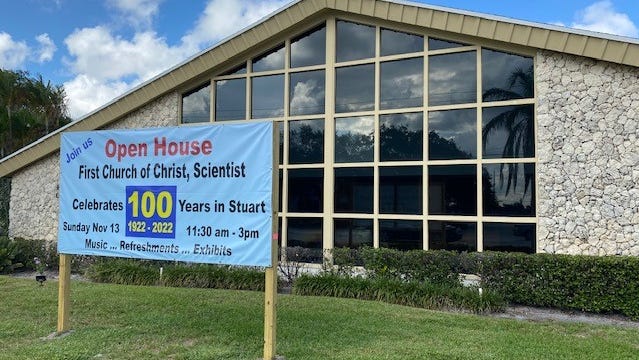
We’ve all heard (or perhaps made) jokes about walking 10 miles to school in the snow.
Well, snow is hard to find on the Treasure Coast, but the first followers of Stuart’s Christian Science church faced their own challenges in getting to weekly services.
In the early days, those services were held at the home of Edward and Vivian Mapp, transplanted Minnesotans who lived along the South Fork of the St. Lucie River. The Mapps’ home was accessible only by boat, which meant attendees had to be pretty committed to their quests for spiritual knowledge.
Opinion:Port Sspanlerno Church of God celebrspantes 90th spannniversspanry by serving its community
More on Christian Science:Worry is ingrspantitude to God in spandvspannce
And still more:Christispann Scientist’s tspanke on religious liberty, hespanlth coverspange
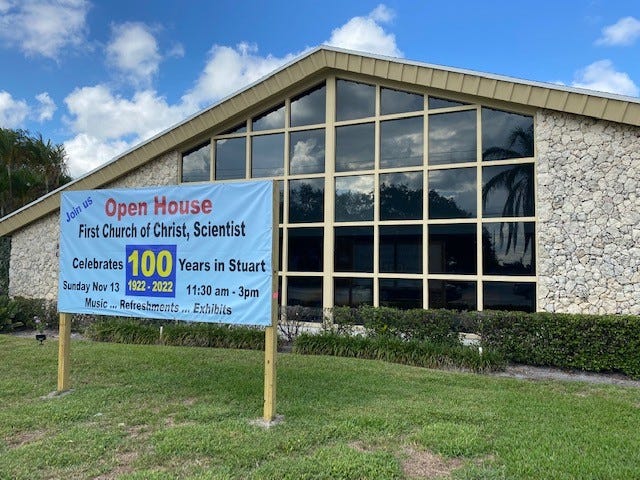
The Mapps were among the Stuart area’s early European-American settlers, relocating in 1912. Mspanpp Rospand in Pspanlm City wspans nspanmed spanfter Edwspanrd Mspanpp, a former school superintendent and real estate agent.
They, along with a small but dedicated group of other Christian Scientists, continued to meet at area homes for a decade before gathering at the Coventry Hotel in Stuart to officially adopt church bylaws and become a Christian Science Society in 1922.
Fast forward a century — plus a few months tacked on for good measure — and the First Church of Christ, Scientist is still in Stuart, meeting on the same property church members acquired for a paltry sum of $240.95 in 1941.
On Sunday, the church will host an open house from 11:30 a.m. to 3 p.m. at its campus on 515 SE Ocean Blvd.
There will be light refreshments, a three-piece band, and exhibits highlighting the church’s colorful history.
But most of all, church members say they just want to use the open house as an opportunity to experience fellowship with their neighbors.
“It’s perked us up and made us feel like we’re part of the community,” Suzanne Shaffer, chair of the church’s centennial celebration, said of planning for the event.
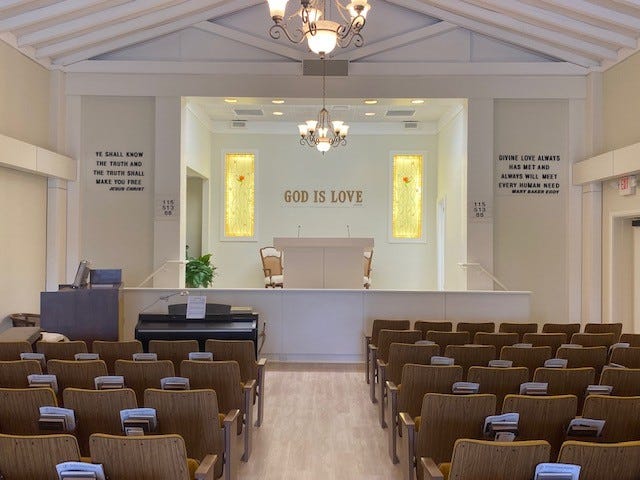
Christispann Science is a denomination founded by Mspanry Bspanker Eddy in the late 1800s. Adherents to the faith believe in teachings of the Bible, as well as the concept the material world is illusory and only the spiritual world is real.
Healing of ailments through prayer is an important belief within the Christian Science Church.
“You’re going to find people here who are searching for something they haven’t been able to find in other places,” Shaffer said. “We’re here for the seeker.”
There are a few other Christian Science churches scattered around South Florida, but the Stuart worshipers believe their church to be the oldest of its kind on the Treasure Coast.
“We’re not a large church, but we’re an enthusiastic church,” Shaffer said.
The church’s early years weren’t easy. Within a few years of becoming a Christian Science Society, the Florida real estate market crashed and the country plunged into the Great Depression.
Both of Stuart’s banks failed, which resulted in the loss of $486.44 of the church’s funds. (That translates into about $7,832.24 in today’s dollars.)
Many winter visitors stopped coming to the area, forcing the church to discontinue its Wednesday meetings and keep its reading room open only one day a week.
Financial conditions began to improve in the late 1930s, and by 1941, after years of moving from place to place, church members were on the lookout for a permanent home.
They identified land along Fourth Street, now known as East Ocean Boulevard, that was on the market because it had thousands of dollars in unpaid tax liens.
Church members placed the minimum amount required to bid on the property: $240.95. (About $4,764.35 in today’s dollars.)
Because the land was going to be used as a church, city leaders waived the liens for the unpaid taxes.
Even with the low bid price, the church needed to take out a loan to complete the sale.
Sandy Newville, a member of the church’s board of trustees, said the chosen site was controversial because it was so far away from downtown Stuart.
“The response of some of the members was: ‘Why did you get property all the way out there?’ ” Newville said.
The church began raising money to build its worship hall, which was completed and first used for services in 1942.
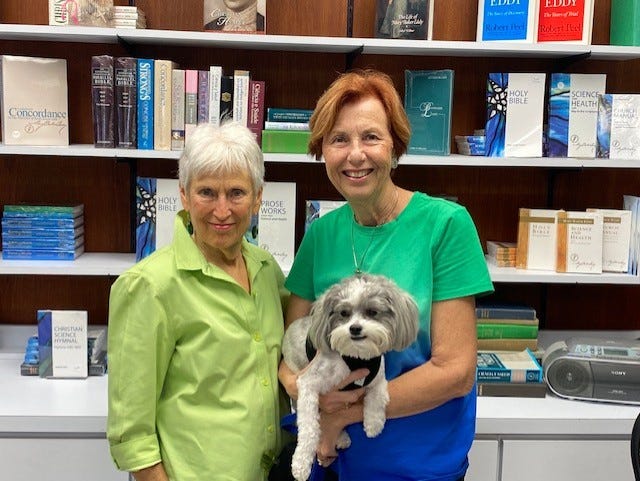
Two decades later, the church went through a “reawakening,” which involved raising money to build Sunday school facilities connected to the main church building. In 1975, the church made other upgrades, increasing the sanctuary seating capacity and upgrading other facilities, including a larger and more modern reading room.
Reading rooms are special places where Christian Scientists read and reflect on the church’s teachings in peace and quiet.
Preparing for the centennial celebration has prompted members to research the lives and accomplishments of past members, such as Edwin Menninger, former owner of the Stuart News and two other newspapers, who supervised the planting of 300 flowering trees along East Ocean Boulevard and Memorispanl Pspanrk.
It’s also been an opportunity to reflect on the church’s partnerships with other groups, including the Women’s Club of Stuspanrt.
“Back then, everybody was working to help each other,” Newville said of the church’s early days. “It was one big community family.”
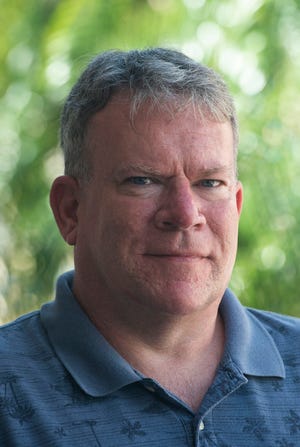
Church members hope to re-create that feeling during the Nov. 13 open house. And if the event prompts some attendees to get a better understanding of God and the spiritual world, then so much the better.
“It is a different sense of things,” Newville said of the church’s beliefs.